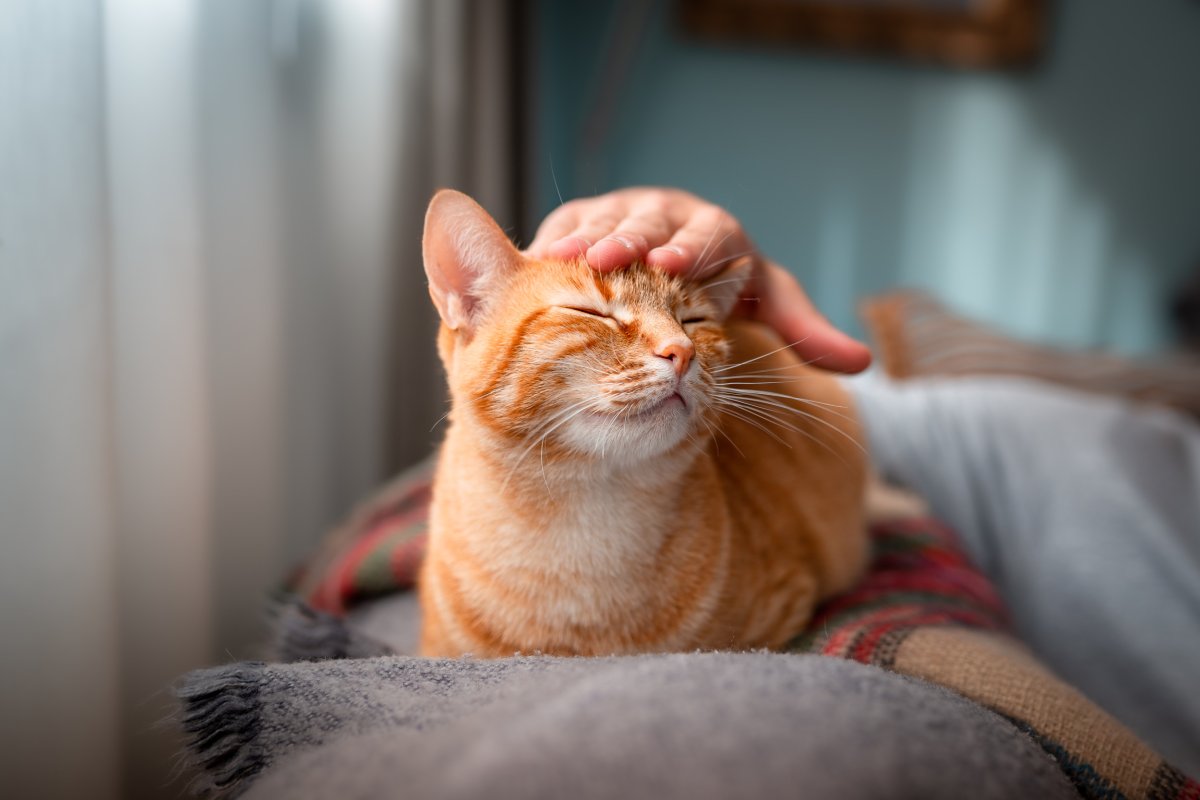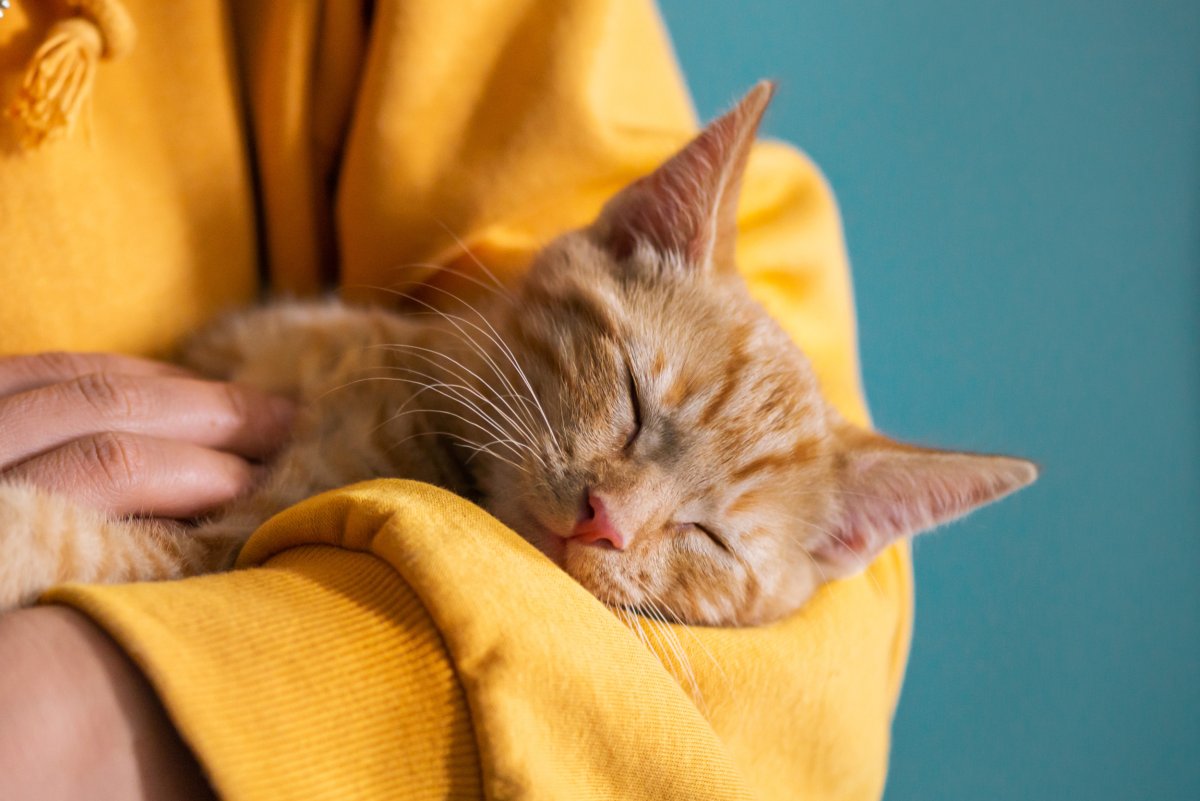The mystery of how cats generate that adorable purring noise when they’re happy has been solved by scientists—and it turns out they have more in common with pop stars than you might think.
Cats have been found to use a similar method to vocal fry in humans—commonly used by singers Katy Perry and Britney Spears—to produce their purrs on autopilot, using a special pad in their vocal cords. That’s according to new research published in the journal Current Biology.
This discovery comes after years of scientists’ puzzling over the origins of the cat purr, as other animals that make similar noises use a deliberate cycle of contraction and relaxation of the muscles in the vocal folds within the larynx (voice box).

ISTOCK / GETTY IMAGES PLUS
“Anatomical investigations revealed a unique ‘pad’ within the cats’ vocal folds that may explain how such a small animal, weighing only a few kilograms, can regularly produce sounds at those incredibly low frequencies (20–30 Hz, or cycles per second)—far below even than lowest bass sounds produced by human voices,” Christian T. Herbst, a voice scientist at the University of Vienna and co-author of the paper, said in a statement.
This was discovered after researchers dissected the voice boxes of eight cats that had terminal disease and had been euthanized. They then pumped humid air through the vocal cords as they pinched them, which mimicked the mechanism used by humans to produce vocal fry. The researchers then found that doing so resulted in self-sustained purring from the voice boxes in the same range as the cats would purr—between 25 and 30 Hz—indicating a constant input from the brain is not required.
“From the viewpoint of neural control, electrical brain stimulation results in a clear distinction between purrs and other cat vocalizations, such as meows, growls, and hisses,” the authors wrote in the paper. “Moreover, previous evidence suggests the potential co-existence of these fundamentally different call types.”
Therefore, rather than deliberately making each individual noise of a purr like first assumed, cats use a special mechanism similar to human vocal fry to purr, without the need for neural input or repetitive muscle contractions, and instead being a passive aerodynamic behavior.
“These low-frequency vocal fold vibrations involve a special vocal mode with an unusually long closed quotient, reminiscent of the “vocal fry” register in humans,” the authors wrote in the paper.
These noises are possible thanks to a specialized pad in the cats’ vocal cords, made of collagen and elastin fibers, which appear to increase the density of the vocal cords and allow them to vibrate more slowly to produce lower-frequency noises like purring. These had been previously discovered, but their function in purring had not yet been established.

ISTOCK / GETTY IMAGES PLUS
This research therefore established that purring may not need constant muscle contraction.
“While our data do not fully reject the active muscle contraction hypothesis for purring,” the authors said, “they show that cat larynges can easily produce sounds in the purr regime with fundamental frequencies of 25 to 30 Hz without neural input or muscular contraction.”
The authors hope that their research can help further discover the true reason cats pur, and the role it plays in their health and wellbeing.
Do you have a tip on a science story that Newsweek should be covering? Do you have a question about cats? Let us know via [email protected].

